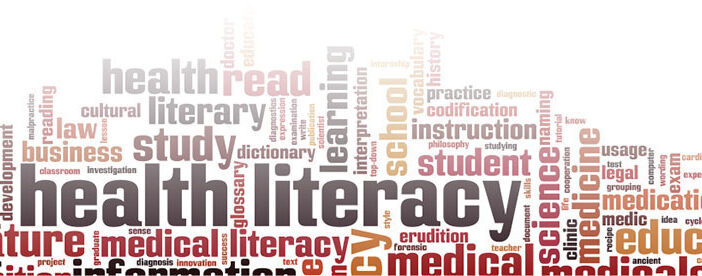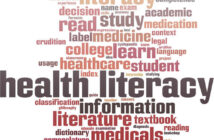Imagine this: You are going to your doctor’s office for a routine exam. You are allotted 20 minutes from start to finish, and you are using insurance as coverage. When you arrive, no one speaks your language and you are given an interpreter to assist during your entire visit. The process feels rushed, and everything takes twice as long because every piece of communication is repeated. You are not able to get your questions answered and leave your exam unsure of what will happen next. On your way out, you are handed a piece of paper with words you don’t understand. You cannot read in your own language, let alone one that is foreign.
Your friend is also there to have a routine exam, is allotted 20 minutes from start to finish, and is using the same insurance for coverage. However, your friend speaks the same language as clinic staff and does not need an interpreter. Yet, they are still given 20 minutes for their exam. Your friend leaves the exam sure of their next steps, and on the way out is a given a handout reinforcing the education given during their exam. They are confident in their ability to care for themselves and manage their health.
Upon learning your friend’s experience, how would you feel? Outraged? Frustrated? Confused? This is the reality for many Americans. Not only are some individuals faced with living in a world that is culturally and socially different from their own, but they are also tasked with navigating an unknown healthcare system.
While the cultural and social differences may not be applicable to all, the task of navigating the healthcare system is universal. It is a unique skill that those who have learned it may not actively consider, but those without it notice the devastating effects every day. What is this skill? Health literacy.
OVERVIEW
Health literacy is a term that refers to the ability to navigate and understand the healthcare system. Literacy is actually a stronger indicator of one’s health status than level of education, household income or race (Quinlan et al., 2013). Individuals with low health literacy are more likely to visit the emergency department, have more hospital stays, are less likely to seek preventive care and have more chronic diseases. With more than 90 million adults in the United States experiencing low health literacy, it is not something to be ignored (AAP, 2021).
HEALTH LITERACY DEFINED
When talking about health literacy, we are not only talking about the ability to read, but also the ability to listen, analyze information, make decisions and apply these skills to one’s own healthcare (Medline Plus, 2020). For example, this may involve the skills required to understand prescription labels, schedule a doctor’s appointment, read medical education pamphlets, locate health information and decide when to go to urgent care or the emergency department.
Health literacy skills are required for everyday living as they are an essential part of healthy living, involving tasks and decisions made daily to prevent illness and maintain health. Thus, health literacy is something that involves everyone regardless of their health status. Health literacy can help individuals prevent future health problems, equipping them with knowledge to make informed decisions that will protect their health. It can also help individuals with chronic illness to manage their condition, prevent worsening of disease and navigate unexpected outcomes that may arise due to their condition.
Health literacy also involves applying health information to one’s life, building on the basic skills of reading and writing and involving verbal communication and critical thinking. Individuals must be able to verbalize their health concerns and adequately describe their symptoms to their doctor. They must know how to ask questions and which questions to ask. They must know how to advocate for themselves when instructions are not clear or when a treatment plan is not suitable for them.
This becomes more and more complex when the same individuals navigating health concerns are simultaneously navigating a different culture, while learning and using a different language. Not only do they have to learn the new language but also the medical terminology. Additionally, health information will be filtered through one’s own cultural lens made up of belief systems, communication styles, values and ways of thinking (CDC, 2021). It is not enough to simply translate medical information; it must be culturally and socially relevant and appropriate.
THE IMPACT OF HEALTH LITERACY
Health literacy is classified as a critical aspect of health, “because it determines the efficiency with which patients seek care and receive treatment” (Vernon, Trujillo, Rosenbaum & DeBuono, n.d.). Individuals with low health literacy misuse healthcare services, going to the emergency department for primary care concerns, or failing to seek preventive care and presenting to their doctor when they are very sick. As one can imagine, this severely strains the healthcare system, costing the United States $106-238 billion annually (Parker & Ratzan, 2010). While health literacy was once attributed to the deficit of an individual, it is now clear that it is a systems issue, “reflecting the complexity of both the presentation of health information and navigation of the healthcare system” (Parker & Ratzan, 2010).
POPULATIONS WITH LOW HEALTH LITERACY
It is important to note that while low health literacy disproportionately affects ethnic minorities, they are not the only population affected. In fact, white, native-born Americans, who make up the largest segment of the population, comprise the majority of those with low health literacy (Vernon, Trujillo, Rosenbaum & DeBuono, n.d.). Other populations who face low health literacy are the elderly, uninsured, those with chronic conditions and those with low socioeconomic status.
STRATEGIES FOR IMPROVING HEALTH LITERACY
It is no secret that one pitfall of the U.S. healthcare system is short appointment times. When patients and families go to their primary care, or even urgent care, there is not time to adequately educate them about the healthcare system. Often, patients will leave their appointment with instructions they don’t understand, a prescription they are unable to pay for, and a follow-up appointment weeks later for a disease they know nothing about.
Thus, to improve health literacy we need to start by investing in adult education. It is one thing to have wonderful resources available to the public, but it is another to have language and reading-level appropriate resources. Educational resources are only as good as those which people understand and have access to.
Consider having free community health classes led by local health departments, clinics or hospitals. Teach the public how to access healthcare, how to schedule a doctor’s appointment and when to go to urgent care or the emergency room. As one-third of adults report they are unable to properly read medication labels, teaching a class on reading prescription labels would be indicated (Parker & Ratzan, 2010).
Along with educating people about their health condition, patients need to be educated on how to access healthcare as only 10% of Americans are proficient in this skill (Parker & Ratzan, 2010). It is not an inherent skill, especially to those of different cultural backgrounds and whose primary language is not English. As we’ve learned previously, higher rates of mortality, hospital admissions and chronic disease are not solely due to lack of information. They are also due to the inability to access information, comprehend and apply that information, and the inability to navigate the healthcare system (Hickey et al., 2018).
BENEFITS OF HEALTH LITERACY CLASSES
Community classes allow public health officials the unique opportunity to know their community on a deeper level. You learn what the community’s goals and priorities are. As Melinda Gates shared in her book The Moment of Lift, it is crucial to understand the community’s values and concerns. She wrote, “Their cup is not empty; you can’t just pour your ideas into it. Their cup is already full, so you have to understand what is in their cup” (Gates, 2019).
We need to understand what is in their cup—poverty? Insecure housing? Job instability? A diverse population calls for diverse interventions to mitigate low health literacy. Community classes are a great solution to meeting diverse needs, as the class can be tailored to specific groups in the community, and lessons focused on their identified concerns. Rather than coming to the community and telling them what is important and what they need to do, we need to ask them what is important to them. What do they see as their own strengths and weaknesses? In what areas would they like to grow? What goals do they have, and how can we partner to meet them? From there, we can support their goals while supplementing knowledge gaps and equipping them with the tools to navigate the healthcare system, creating healthy individuals and healthy communities.
REFERENCES
American Academy of Pediatrics. (2021). Addressing low health literacy. https://www.aap.org/en-us/professional-resources/practice-transformation/managing-patients/Pages/health-literacy.aspx
Centers for Disease Control and Prevention. (2021, June 21). Health literacy tools for cross-cultural communication. U.S. Department of Health and Human Services. https://www.cdc.gov/healthliteracy/culture.html
Gates, M. (2019). The Moment of Lift: How empowering women changes the world (p. 43). Flatiron Books.
Hickey, K. T., Masterson Creber, R. M., Reading, M., Sciacca, R. R., Riga, T. C., Frulla, A. P., & Casida, J. M. (2018). Low health literacy: Implications for managing cardiac patients in practice. The Nurse practitioner, 43(8), 49—55. https://doi.org/10.1097/01.NPR.0000541468.54290.49
Medline Plus. (2020, December 1). Health Literacy. https://Medlineplus.Gov/Healthliteracy.Html#:∼:Text=More%20than%2090%20million%20adults%20in%20the%20United,Hospital%20more%20often%2C%20and%20have%20poorer%20health%20overall.
Parker, R., & Ratzan, S. C. (2010). Health literacy: a second decade of distinction for Americans. Journal of health communication, 15 Suppl. 2, 20—33. https://doi.org/10.1080/10810730.2010.501094
Quinlan, P., Price, K. O., Magid, S. K., Lyman, S., Mandl, L. A., & Stone, P. W. (2013). The relationship among health literacy, health knowledge, and adherence to treatment in patients with rheumatoid arthritis. HSS journal: the musculoskeletal journal of Hospital for Special Surgery, 9(1), 42—49. https://doi.org/10.1007/s11420-012-9308-6
Vernon, Trujillo, Rosenbaum, And DeBuono, J. V. A. T. S. R. B. D. (2007, October 4). Low Health Literacy: Implications for National Health Policy. https://publichealth.gwu.edu/departments/healthpolicy/CHPR/downloads/LowHealthLiteracyReport10_4_07.pdf




